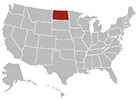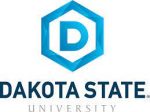
Some people working in the health care field may not want as much direct patient contact as they used to.
However, they might not want to have to undergo an unrelated career change.
Therefore, they might decide to become a medical billing and coding specialist.
Page Navigation
Licensing Requirements To Become
The North Dakota state government doesn’t require individual billing and coding job candidates to have a license.
However, ND does provide extensive information on Medicaid coding guidelines for insurance providers.
You will learn some information provided to health insurance carriers, only the updated versions if you attend a training program approved by the American Academy of Professional Coders (AAPC).
In addition, you could acquire a certification from the American Health Information Management Association (AHIMA) or the National Healthcareer Association (NHA).
5 Medical Billing & Coding Schools in North Dakota
The University of North Dakota
![]()
UND offers a Certified Billing and Coding Specialist training program approved by the AAPC.
It will prepare you for the Certified Professional Coder (CDC) certification exam.
During this training, you will acquire access to all CPT and ICD-10 costs from the Healthcare Common Procedure Coding system, also known as HCPCS.
Southeast Technical College

Southeast Technical College has a Certified Professional Coder program that you can take in three blocks, one in the fall, spring, and summer.
They have an additional one that would prepare you for a billing position.
Both have similar classes, such as the ICD-10 and CPT coding courses.
In addition, they introduce you to the Anatomy and Physiology required for understanding insurance claims and patient billing.
Either one of these programs, which would take about a year, would prepare you for one of three certificate exams: Certified Professional Coder (CPC), Certified Inpatient Coder (CIC), or Certified Coding Specialist (CCS).
AAPC hosts the CPC and CIC exams, and AHIMA hosts the CCS exam.
It is also possible to take additional courses and earn an associate degree, which would take about two years.
Dakota State University

Dakota State University offers a training program approved by AHIMA.
Earn one of these certificates after taking this training: The CCA (Certified Coding Associate), CCS, or the CCS-P (Certified Coding Specialist-Physicians Based).
Learn codes for classifying treatment procedures, medical conditions, insurance records, and patient bills.
Learn related medical terms too, which will help you understand the codes you are using when filling in patient information.
AAPC’s Own Training

The AAPC offers its own training tracks to help you take their exams, which employers would recognize.
Make sure you request the materials along with your coursework that pertains to the certification you want to earn.
This association has about a dozen popular certificate options, including those pertaining to outpatient, inpatient, and physician’s coding.
You also can concentrate on only billing or only coding, or you can obtain certification in both specialties to expand your skills.
AHIMA Courses

AHIMA has a database of online coding courses you can take.
They introduce you to ICD-10-CM and ICD-10-PCS procedures, and you also can take HCPCS Level II training.
In addition, this association provides a HIPAA privacy and security course, and they also have data analysis and leadership classes.
Besides AAPC and AHIMA, the NHA may provide you with additional leads on approved training programs.
You do not necessarily have to take a credit class, but the information must coincide with what you’d use when you start practicing onsite as a paid assistant.
Billing and Coding Schools in North Dakota – Summary Table
Top 5 Schools in North Dakota
| School Name | Address |
|---|---|
| University of North Dakota | Grand Forks, ND 58202 |
| Southeast Technical College | 2320 N Career Ave, Sioux Falls, SD 57107 |
| Dakota State University | 820 Washington Ave N, Madison, SD 57042 |
| AAPC | 5050 Kingsley Dr. Cincinnati, OH 45227 |
| AHIMA |
Salary
A medical coder earns an average of about $48,074 in Fargo, North Dakota.
You might earn about $10,000 less than this before you pass your first certificate exam and are still in training as an assistant.
Cities where you can find jobs include Fargo, Bismarck, Minot, and Grand Forks.
You are not limited to those locations though.
Annual Salary Range:Average Salary of Medical Biller and Coders in North Dakota
| City Name | Salary |
|---|---|
| Fargo | $38,600 |
| Bismarck | $39,300 |
| Grand Forks | $36,300 |
| Minot | $38,700 |
| Mandan | $39,300 |
| Dickinson | $38,700 |
| Jamestown | $38,300 |
| West Fargo | $38,599 |
| Williston | $38,700 |
| Wahpeton | $38,000 |
Regional Salary in North Dakota
| Region | Employed | Avg. Annual Salary | Avg. Hourly Pay | Top 10% Annual Salary | Bottom 10% Annual Salary |
|---|---|---|---|---|---|
| Bismarck, ND | 90 | $49,400 | $23.75 | $59,990 | $37,450 |
| Fargo, ND-MN | 140 | $49,220 | $23.66 | $62,750 | $37,530 |
| Grand Forks, ND-MN | 60 | $47,040 | $22.61 | $59,250 | $37,080 |
* Employment conditions in your area may vary.
Frequently Asked Questions
What does a billing and coding specialist do all day?
A billing and coding specialist usually classifies medical procedures for billing to insurance companies.
They maybe have memorized the codes used for this purpose, or they might look them up in the manuals or apps provided to them upon becoming certified.
Someone in this field might also answer patient billing questions.
What kind of environment does a ND biller and coder work in?
They typically work in an office environment with a computer.
It is usually in a hospital, doctor or dentist’s office, an outpatient clinic, or another medical or mental health facility.
Other places they might work may include public clinics or assisted living centers that have medical staff.
What skills must a billing and coding specialist have?
A billing and coding specialist must have an understanding of the healthcare system, coding guidelines and procedures, and technology.
In addition, they need to enter accurate data into a computer to make sure patients receive their entitled payment reimbursements.
Even though a biller and coder might not have as much patient contact as a nurse or doctor, they still need to have some people skills.
This also may require some perseverance when dealing with frustrated clients who might worry that their bills will not get paid by an insurance carrier.
What challenges do ND medical billers and coders face?
They might have to deal with patients who do not have their insurance information ready when requesting health care services.
Billing and coding specialists also cannot make any mistakes when entering insurance and invoice classification codes.
What is more, people working in this field might become stressed out during busy patient intake times or bored when they must repeatedly enter the same codes all day long.
How much training does a medical billing and coding specialist need?
A medical billing and coding specialist may not need more than a few months of training to work as an assistant.
During this time, they will have probably passed their certification exams in less than six months.
Advanced coding positions, however, might require a bachelor’s degree in healthcare management, health information technology, or business administration.
Associate degree programs also will move qualified applicants ahead of persons just starting out in the field.




